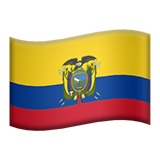 CANNED FOOD PRODUCTION IN ECUADOR
CANNED FOOD PRODUCTION IN ECUADORCanned food production in Ecuador is a growing industry, supported by the country's rich biodiversity and agricultural productivity. Ecuador is known for its variety of fruits, vegetables, and seafood, which contribute to the canned food sector. Here are some key aspects of canned food production in Ecuador:
1. Types of Canned Products
- Seafood: Tuna and sardines are the primary canned seafood products, with Ecuador being one of the largest tuna exporters globally. These products are exported to the U.S., Europe, and other parts of the world.
- Fruits: Pineapple, mango, and other tropical fruits are canned for both domestic and export markets. Ecuador’s climate allows for year-round fruit production.
- Vegetables: The country also produces canned palm hearts, which are popular in international markets. Canned vegetables, while not as dominant as fruit and seafood, are also produced.
- Sauces and Condiments: There is a growing market for Ecuadorian salsas, hot sauces, and other traditional condiments that are canned for export.
2. Key Companies and Market Players
- Some well-established Ecuadorian companies are involved in the canned food sector, especially in tuna and seafood processing. Major players include companies like Nirsa, Conservas Isabel, and others.
- Many of these companies have invested in quality and certification processes to meet export requirements, including those for the U.S. FDA and the European Union.
3. Export Market
- The export of canned seafood, particularly tuna, is a significant contributor to Ecuador’s economy. Ecuador's strategic location on the Pacific Ocean makes it ideal for fishing and seafood production, especially for high-demand markets.
- Fruits and vegetables in cans are exported primarily to North America, Europe, and parts of Asia. Ecuador leverages trade agreements with these regions to enhance the reach of its canned food products.
4. Quality Standards and Certifications
- Ecuadorian canned food producers adhere to strict quality standards, especially when targeting international markets. Certifications like HACCP (Hazard Analysis Critical Control Point) and Good Manufacturing Practices (GMP) are common.
- For seafood, Ecuador complies with standards from the Marine Stewardship Council (MSC) and Dolphin Safe certifications, which are essential for access to U.S. and European markets.
5. Challenges
- Environmental Sustainability: The industry faces challenges around sustainable fishing practices and environmental impact. Tuna fishing, for example, requires close monitoring to avoid overfishing and ensure ecological balance.
- Infrastructure: Some areas require further investment in infrastructure, including processing facilities, cold storage, and transport.
- Competition: Ecuador faces competition from other large canned food producers like Thailand and Peru, especially in the seafood sector.
6. Government Support and Regulations
- The Ecuadorian government promotes canned food production through incentives for export-oriented agribusinesses. It offers tax benefits and supports foreign investment in the food production sector.
- Government agencies work to ensure the competitiveness of Ecuadorian canned products, supporting companies in meeting international food safety and sustainability standards.
The country's strategic location and access to abundant marine resources have contributed to its prominence in the global canned tuna market.Ecuadorian tuna is highly regarded for its quality and sustainability practices.In 2023, Ecuadorian canned tuna exports amounted to USD 1,18 Billion and 229.000 Tons.
Ecuadorian tuna is one of the most popular products in the international market, as it is rich in protein, Omega 3, Vitamins A, B12, D, Calcium, Zinc and other nutrients that lead consumers to prefer it over beef, pork and chicken.
Ecuador’s tuna industry is environmentally responsible and complies with the 72-day annual ban imposed by the Inter American Tropical Tuna Commission - IATTC; however, due to the large storage capacity of its factories, processing can continue all year round. Ecuador has a production capacity of 500.000 Tons per year, with Skipjack, Yellowfin and Bigeye being the main species caught.
Ecuador is the second largest exporter of canned tuna in the world and has the second largest tuna fleet in the Eastern Pacific Ocean.
Source: feedplanetmagazine.com
In summary, Ecuador's canned food production industry is robust, with a strong emphasis on seafood and tropical fruits, benefiting from rich natural resources and government support. The country’s producers are well-positioned in global markets, though they face challenges that require ongoing innovation and sustainability efforts.
La produzione di conserve alimentari in Ecuador è un settore di crescente importanza, legato sia al consumo interno che all'esportazione. Il paese sfrutta la sua biodiversità e la varietà di prodotti agricoli per sviluppare un'ampia gamma di conserve alimentari, incluse frutta, verdura, pesce e prodotti tradizionali.
Principali Caratteristiche del Settore:Prospettive per il Futuro:
La combinazione di biodiversità, tradizioni alimentari e innovazione tecnologica rende l'Ecuador un attore interessante nel mercato globale delle conserve alimentari. Con il supporto di politiche adeguate e il miglioramento della sostenibilità, il settore potrebbe ampliare la sua quota di mercato internazionale e rispondere alla crescente domanda di prodotti alimentari naturali e di alta qualità.